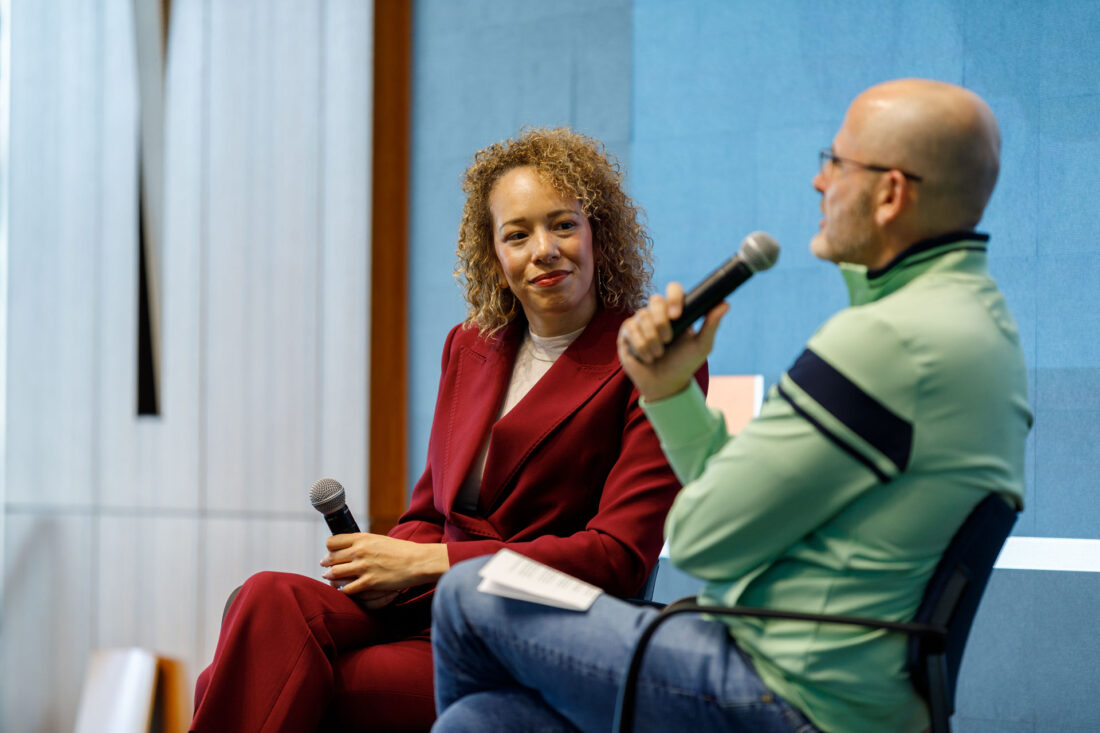Top HR and tech leaders join academics to tackle AI’s human impact at Culture Connect Conference
Watch Leif Nelson talk about his research.
When customers are allowed to pay what they want for a purchase, knowing a portion of the payment will go to charity, they become rather generous, according to a study by Associate Professor Leif Nelson, Haas Marketing Group. Nelson says the concept of “shared social responsibility," a term coined by the study’s authors, may provide the sustainability component often lacking in current corporate social responsibility strategies.
“Many firms considered it important to contribute to social welfare but their charitable efforts are not coming back in increased sales and profits,” says Nelson, “Pay-what-you-want pricing is exactly that, letting the customer determine the price. If you combine these two efforts, it means every time you buy at pay-what-you-want-prices, every dollar you spend is a direct signal of how much you care about a charitable partner. Companies can do more with their social responsibility interventions by allowing customers to individualize their contribution.”
“Shared Social Responsibility: A Field Experiment in Pay-What-You-Want Pricing and Charitable Giving” was published in Science magazine (July 2010, Vol. 329. no. 5989, pp. 325–327). The paper is co-authored with Ayelet Gneezy, assistant professor and Uri Gneezy, professor, both at the University of California, San Diego’s Rady School of Management, in collaboration with Amber Brown, research scientist, Disney Research.
The experiment occurred at a popular rollercoaster ride in a large amusement park and offered pay-what-you-pricing on the “action” photos that are taken of visitors while they are on the ride. These souvenir thrill photos are offered to riders after they disembark the ride. The researchers tracked four treatments: 1) offering the photos at the regular price of $12.95, 2) offering the photo for $12.95 and telling customers that half of the 12.95 collected will go to charity, 3) offering the photos for whatever price the customer wanted to pay, including zero dollars, and 4) offering the photos at pay-what-you-want pricing and telling customers that half of what they spent would go to a specific charity. The researchers told the customers the name of the charity, a popular patient support organization.
Half a percent of riders (28,224) purchased a photo at the regular $12.95 price, yielding a small profit of about 7cents per rider. Slightly more, .6% (30,592) paid $12.95 when they learned that half would go to charity. When it came to pay-what-you-want pricing, 8.4% (28,263) bought pictures, but paid only about 92 cents each, slightly less than the cost of production. But the most impressive result came when pay-what-you-want prices were combined with the charitable partner. Fewer people bought photos (about 4.5%), but they paid an average of $5.33 per photo, substantially more than without the involvement of the charity. This yielded post-cost revenue of nearly 20 cents per rider.
“What that means is the fourth treatment generates the most profit for the company. Not only is it more profitable in simple terms of how much money is earned, but there is also a charitable surplus that gets to go to the charity itself,” says Nelson.
Nelson attributes the findings to longstanding social norms. Furthermore, he argues that pay-what-you-want pricing can be a sustainable pricing and social responsibility strategy. “There is a built-in social norm that when it comes to charity, you are not supposed to look for lowest price, this is when you are supposed to be a little more generous and I think that willingness to pay more would become more stable over time.”
The study acknowledges making corporate social responsibility (CSR) work in the long term depends on firms’ gaining its customers’ trust. “What you want is a system that is necessarily honest. And that’s part of what pay-what-you-want strategy has to be; there can’t be any sinister motives.” Most importantly, Nelson says it is critical for firms to take an active role in offering choice in the process of donation. He says firms should allow customers to designate a charity of their own choice because that opportunity creates trust and allows the customer to express his or her identification.
“The customer might say, ‘I’m a big supporter of Sierra Club but also, ‘Gosh, this company allowed me to choose this, maybe this company is really taking this seriously’, “ says Nelson, "They want me as a customer to be involved in their social responsibility. Smaller steps along the way should yield similar benefits.”
When customers are allowed to pay what they want for a purchase, knowing a portion of the payment will go to charity, they become rather generous, according to a study by Associate Professor Leif Nelson, Haas Marketing Group. Nelson says the concept of “shared social responsibility," a term coined by the study’s authors, may provide the sustainability component often lacking in current corporate social responsibility strategies.
Posted in:



